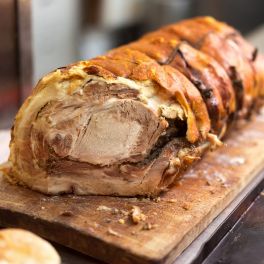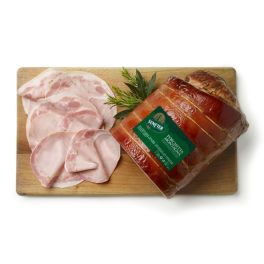Porchetta: which is the best and where to buy it online
Porchetta is a typical product of the Lazio and central Italian regions, which is also well known abroad. This food is made from pork roasted in the oven and sliced like a salami. The history of porchetta is almost a thousand years old and the sources for reconstructing its origins are uncertain. The most famous product bearing the PGI mark is porchetta di Ariccia, but there are several similar products of good quality.
In this guide, we take you on a tour of one of Italy's tastiest and most typical products and explain the difference with porchetta d'Ariccia, the only one with the I.G.P. mark. At the end of the article, you will find directions on how to find the product online at the best price!
Origins of porchetta
Porchetta has very distant origins, its existence can be traced back to the ancient Romans, with Apiceo's recipe: the porcellum farcilem, found in his historical recipe book.
Already then, the goodness of baked pork was understood, especially when combined with a variety of spices. The recipe described by Apiceo in fact is very similar to the present one: it involves freeing the piglet of its innards and spicing it with a mixture of spices, salt and pepper; tying it up and roasting it.
There are also traces of a similar dish in Vincenzo Tanara's treatise on Bolognese agronomy; already in more recent years, 'porchettari' were heard of in central Italy.
Over time, porchetta became very popular throughout Italy and a great success, especially among the working class.
The actual recipe has uncertain origins, but it is thought to come from central Italy, from the areas of Lazio and Umbria. Today, in fact, there are two cities competing for the reputation of producing the most prized product: Ariccia, a Roman municipality, which has also earned the PGI mark, and Norcia, in Umbria, which is still very famous for its exclusive recipe.
What is Ariccia porchetta and why is it prized?
The traditional recipe for porchetta requires first of all that the pig be female and, before being prepared, be boned by hand using a special technique.
The specifications provide for the removal of all bone parts except for the fibia and fibula of the hind limbs; the cranial bones must be left.
The meat must also be trimmed by removing excess parts, such as ham, neck, shoulder and fillet meat; in order to allow the dish to be properly cooked.
There follow other important steps to define the typical PGI recipe of porchetta di Ariccia, such as:
- Salting: fine sea salt must not exceed 15-3 grams of salt per kilogram of raw material.
- Resting: at least one hour must elapse after salting so that the salt is completely absorbed.
- Massaging: massaging must be done manually and in all parts of the log where the salt has been distributed. the minimum time required is between 30 seconds and 5 minutes, in order to remove excess salt.
- Spicing: the spice mixture must include black pepper, rosemary and garlic in the quantity of 150 to 250 g per 100 kg of raw material.
- Tying and stitching: tying and stitching is the most important phase as it helps to give the porchetta its original cut. In fact, the roast pork is tied and sewn around a food-grade aluminium or stainless steel tube, with the aim of internally favouring even heat transmission and diffusion during cooking. At this stage the trunk is shortened and compacted by passing the string along the entire length of the trunk.
- Baking: baking must take place in the oven, which has been preheated to 200 C° . The temperature during cooking must remain between 160° and 280°, over a period of between 3 and hours. This is how the crispy crust typical of porchetta is obtained.
In addition to the historical reasons, although not yet fully ascertained, that link the production of porchetta to a thousand-year-old tradition, there is a specific reason that has enhanced the production of Ariccia's porchetta.
The first festival to celebrate the dish originated in the Roman municipality in 1950. Even today, this important folkloric-style event still takes place every year, with the vendors at the stalls dressed in traditional Ariccia clothing.
Can porchetta be eaten during pregnancy?
Being a baked product, porchetta can also be eaten during pregnancy. Medicine, in fact, advises pregnant women against eating food in raw form.
However, it is advisable to moderate consumption, as it is a very spicy and high-calorie food. If possible, eat it on a plate, accompanied by vegetables; it is best to avoid the porchetta sandwich.
Advice on where to find porchetta online
If you want to find high quality Ariccia roast suckling pig at the right price, you can browse our store: you can find the 4.5 kg Leopardi IGP Ariccia roast suckling pig at only 79.00 euro per piece! You can also try the Senfter Mountain roast suckling pig, characterised by its long cooking time and its scent of aromatic herbs.


 Italiano (IT)
Italiano (IT)  Deutsch (DE)
Deutsch (DE)  Français (FR)
Français (FR)  Español (ES)
Español (ES)  Polish (PL)
Polish (PL) 



Share on: